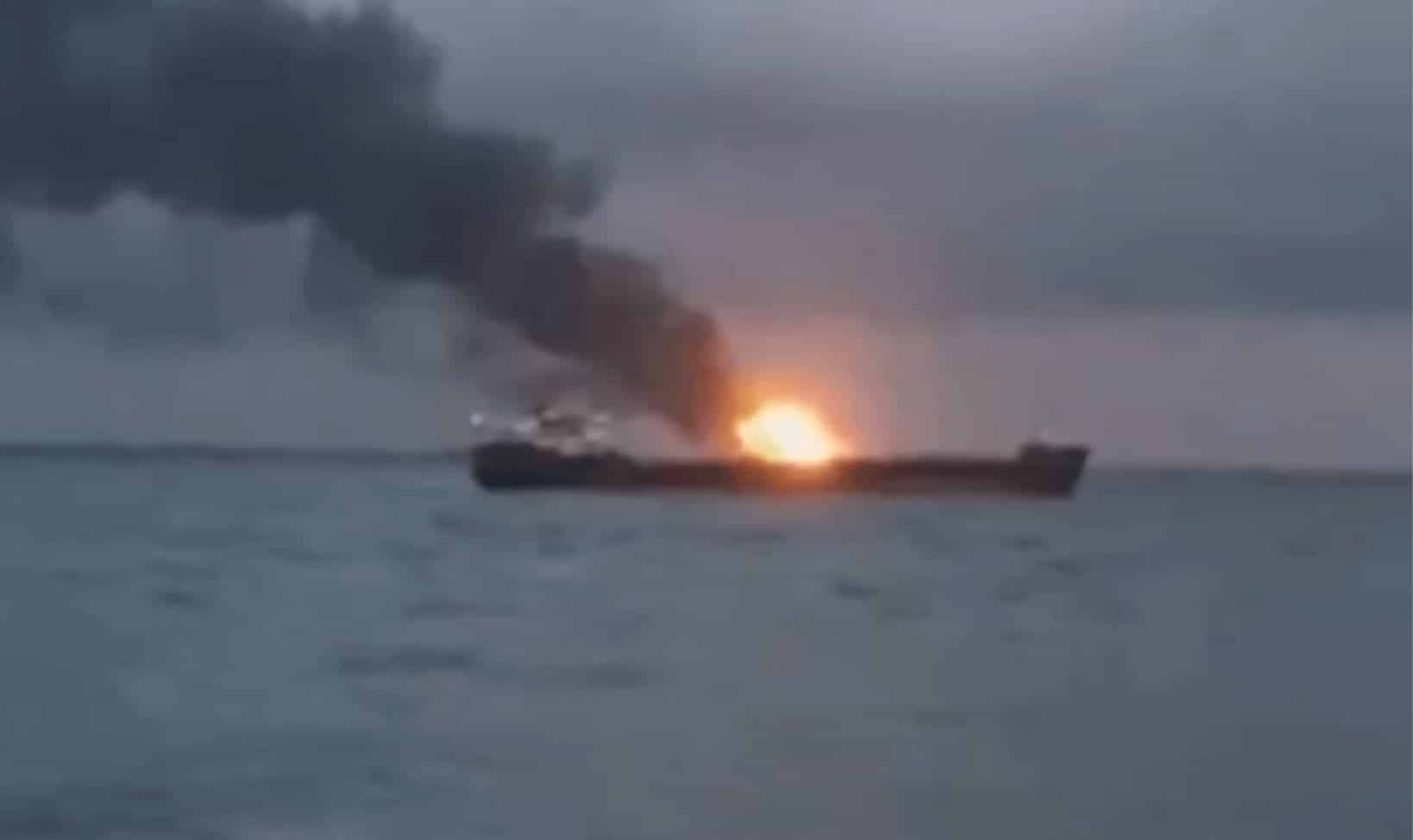What’s inside?
If you could choose any two ships destined to be involved in a serious incident, you would do well to pick the Candy and the Maestro.
The two tankers, which were involved in an explosion and fire that killed more than a dozen crew in the Kerch Strait, are in the top 2% of the world’s riskiest vessels for smuggling, according to the Windward Platform.
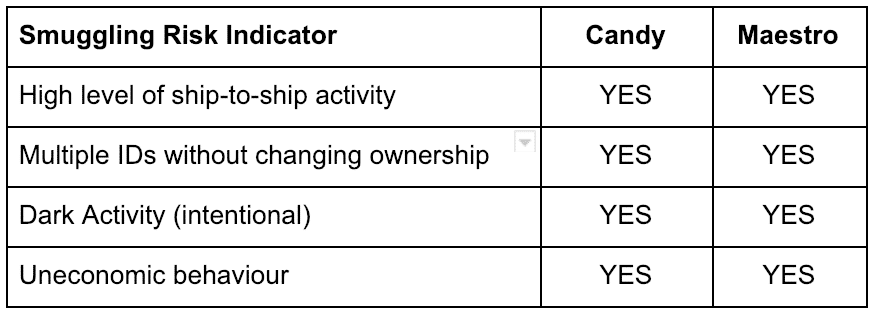
There are several reasons for this. The Candy is on its third name and fourth flag since 2013. Back then it was called Ocean Primus and flew the UK flag. It then changed managers, switching to various flags of convenience in the process (Panama, then landlocked Mongolia, then Tanzania). It intentionally turned off its AIS transponder on 77 days over the past 12 months; the average for the world LPG tanker fleet was three days (the U.S. Treasury’s Office of Foreign Assets Control (OFAC) suspected some of these dark days might have involved the illegal smuggling of LPG to Syria):
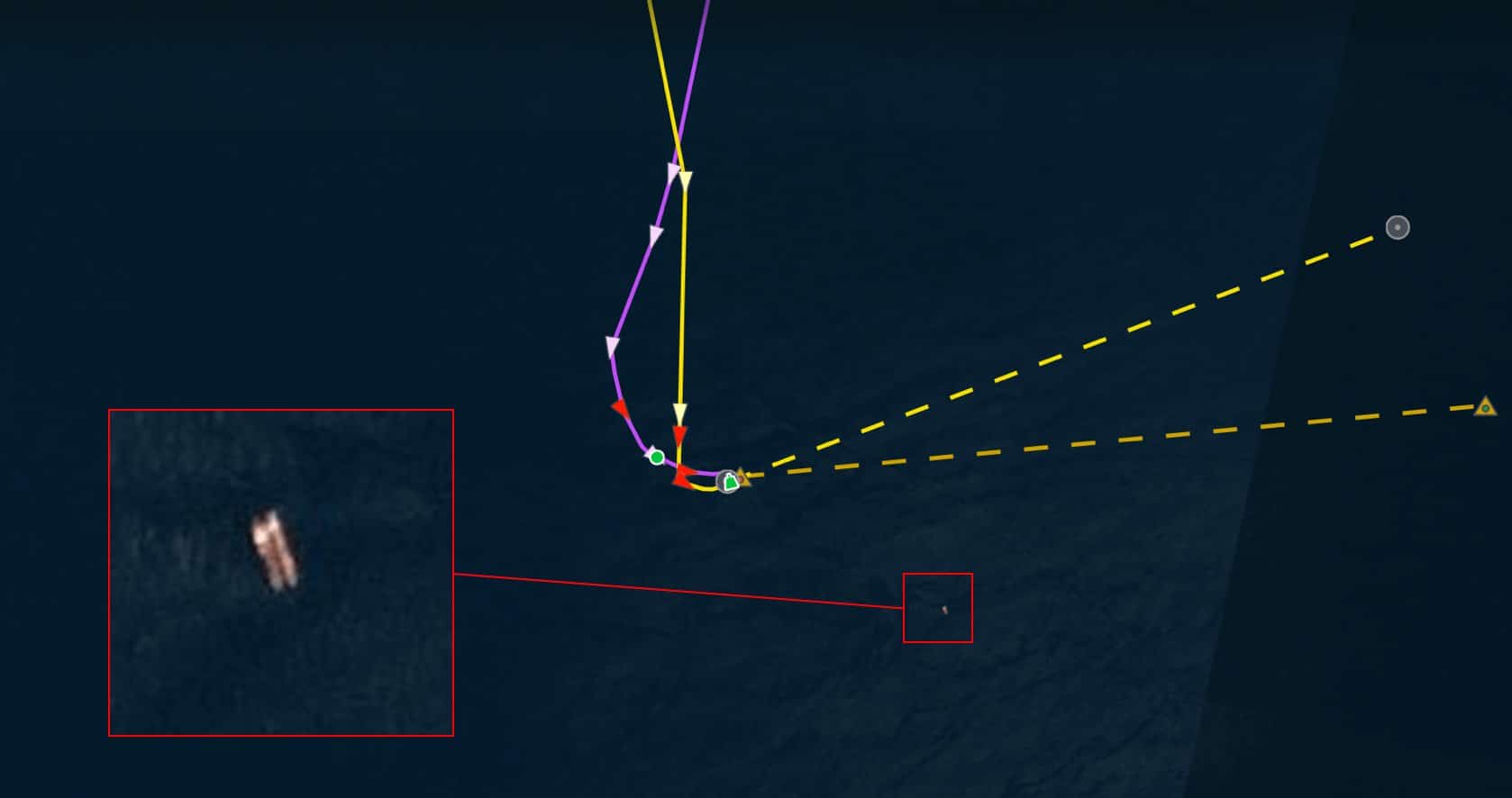
What’s more, the Candy spent just 31 days in port over the past year, less than half the median for the world LPG fleet. And as we’ve previously reported, the devil finds work for idle ships. In 2018, Paris MoU port state control discovered 10 deficiencies, though unlike the Kuzma Minin, the Candy was never detained.
The Maestro – which shares an Anguilla address with the Candy, and which is also owned by a company that owns just one vessel – is no angel either (the two also used to share a management company).

The Maestro has also been suspected of engaging in illegal ship-to-ship transfers off the coast of Syria (see image below). It’s on its third owner and fourth flag since 2013. It intentionally turned off its AIS transponder for 82 days over the past 12 months (again, versus an average of three). And spent just 21 days in port, implying low economic utilization as discussed here.
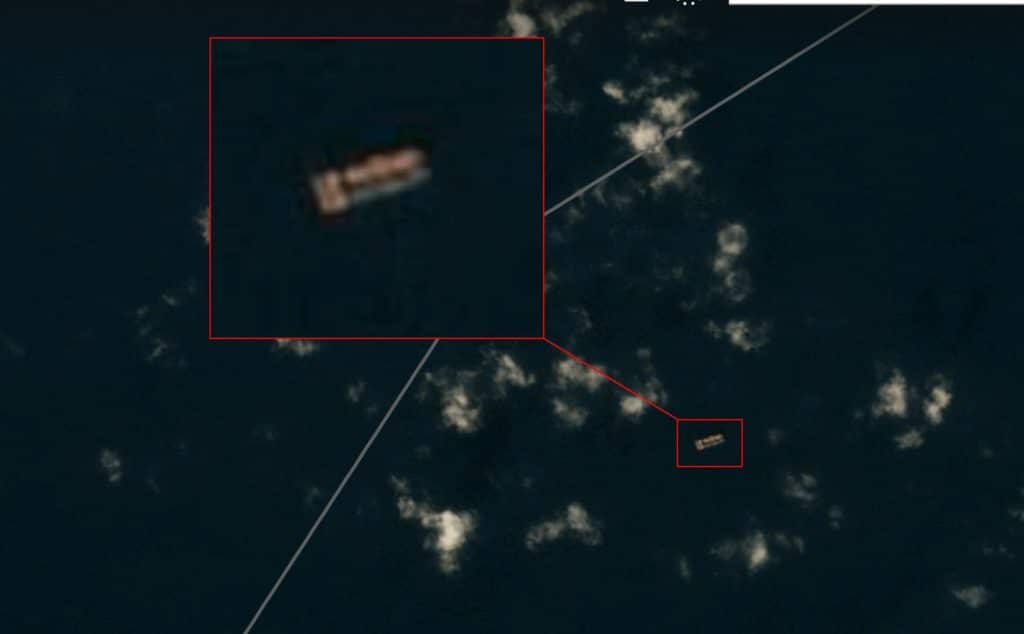
On the insurance front, these two vessels are both rated 5, or “very high-risk”, by the Windward Risk Model, which predicts the likelihood of a vessel or fleet having an accident in the year ahead, and the losses this might entail.
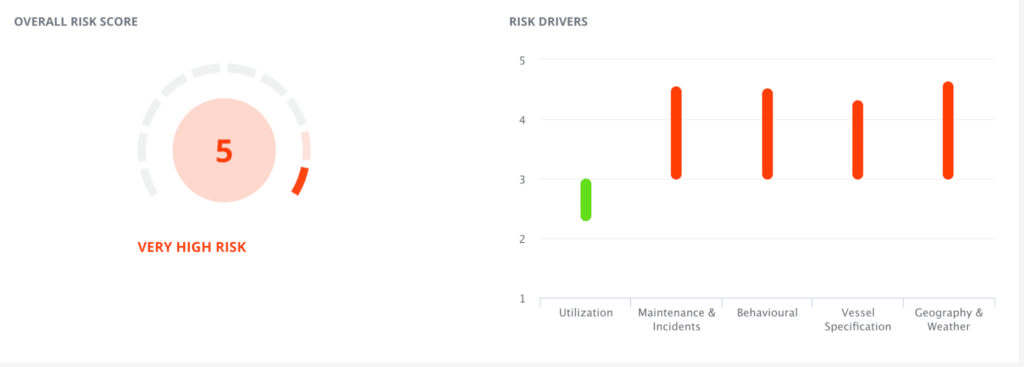
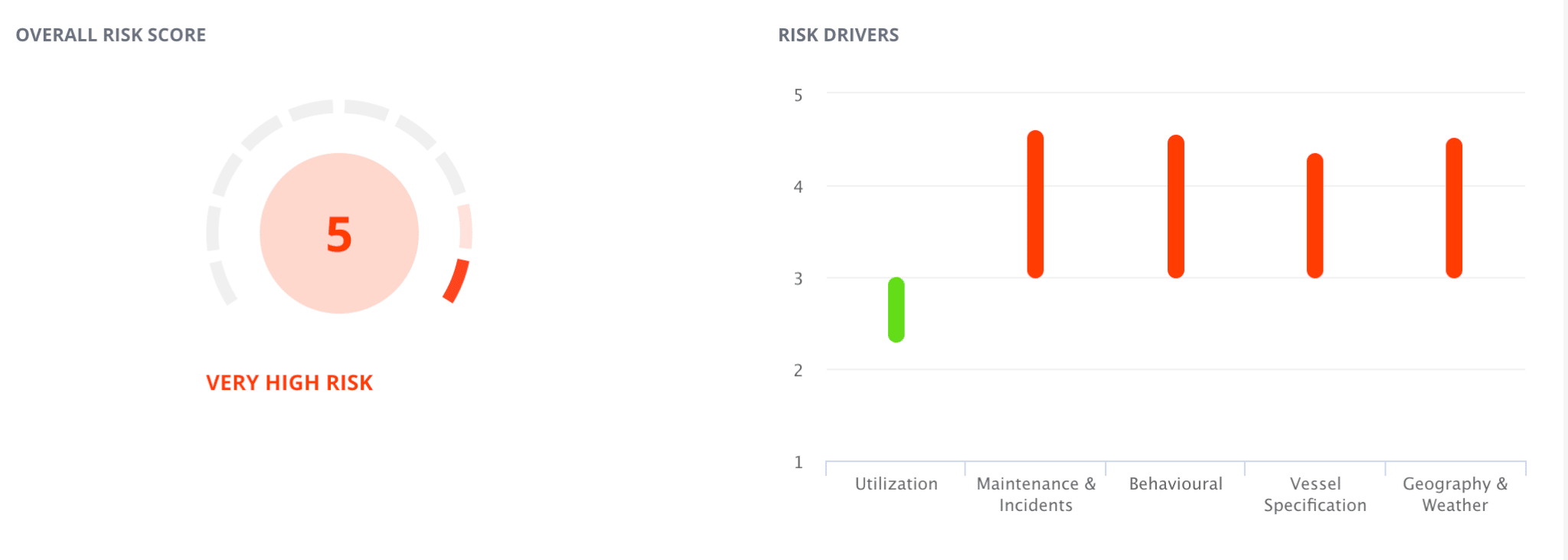
The port state control deficiencies, days in port and deliberate turn-off-transmissions described above are all indicators of high insurance risk as well (indeed, the insurance and intelligence models we use feed off the same data; accident risk and smuggling risk do sometimes correlate). But there are many others. For example, both the Candy and the Maestro spent inordinately large amounts of time in areas prone to collisions (though this particular accident wasn’t a collision, so far as we’re aware).
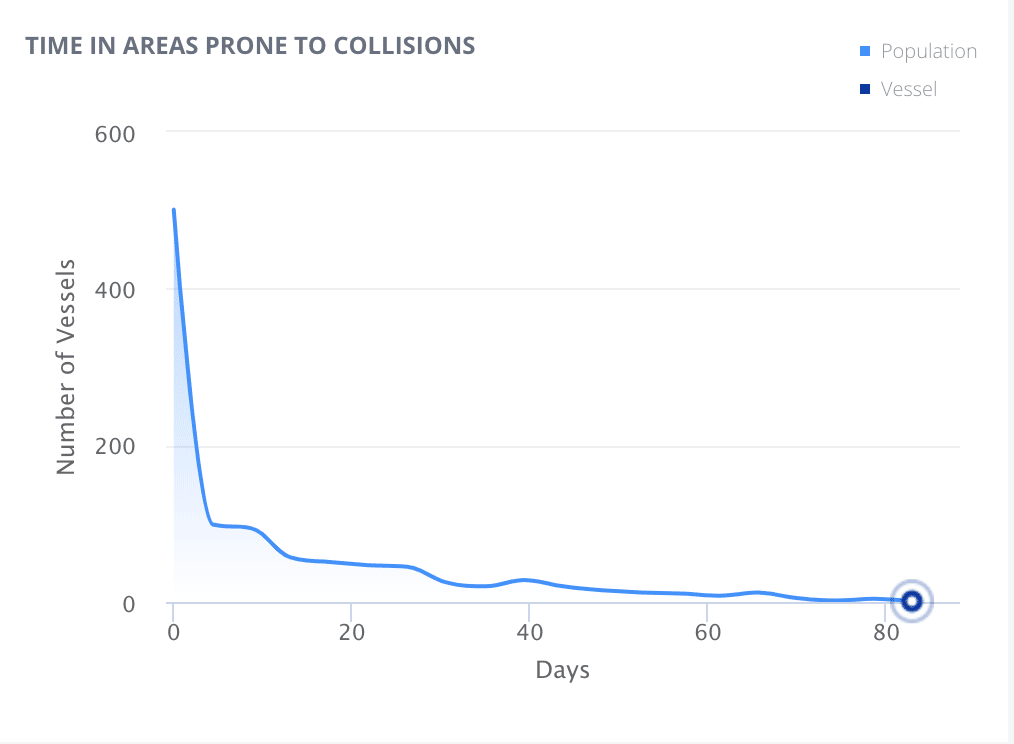
Much of the marine insurance market would look at these vessels with a robust set of static data – things like age, size, class and deadweight – as it have done for more than 300 years. This might lead many to conclude that this was another accident that was inevitable (carrying out a ship-to-ship transfer of fuel can of course be quite dangerous at the best of times!). But that’s not the case. Take the Gas Stal. It’s a similar-sized LPG tanker to the Candy and Maestro, built around the same time (1991), and flies the Panamanian flag. Yet according to the Windward Platform it has no discernible risk for smuggling. And its Windward Insurance Risk is a very respectable, low-risk 2.
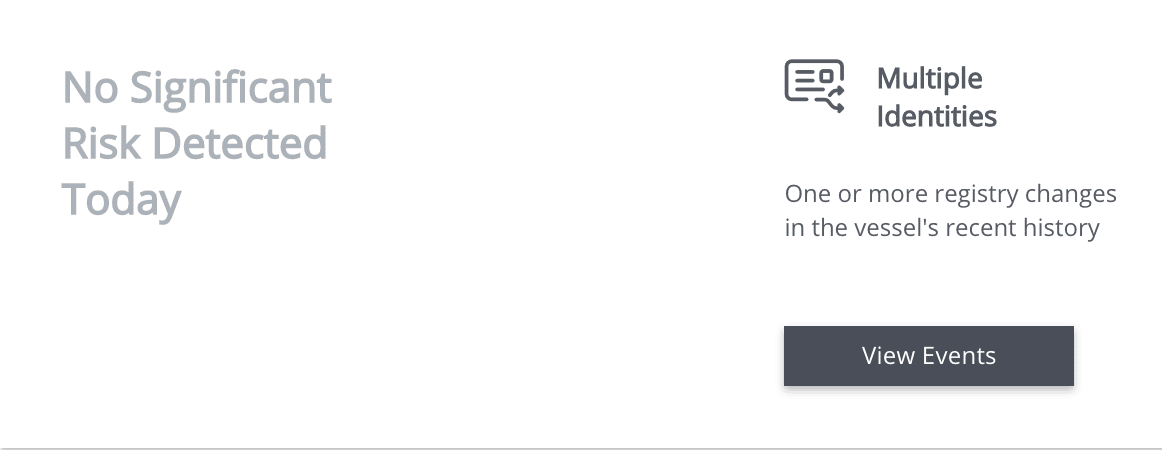
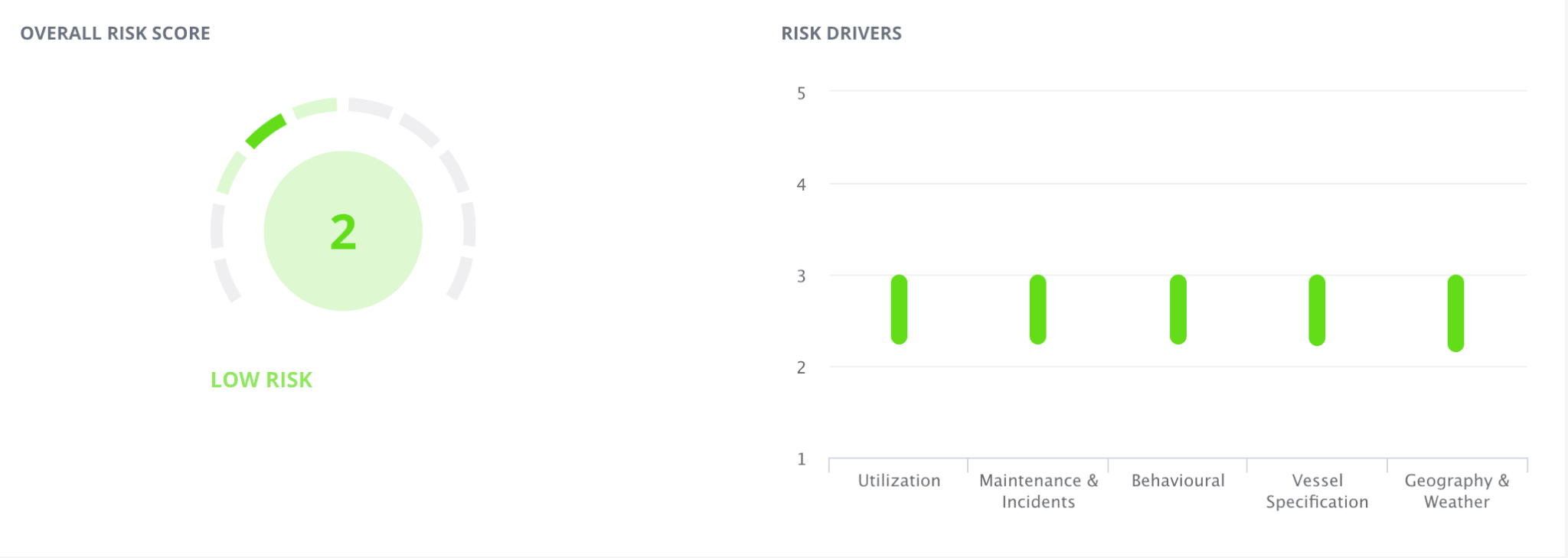
To be clear, technology – even the artificially-intelligent variety that drives our solutions – is far from being able to predict specific accidents. And there won’t be a Minority Report-style “pre-crime” for vessels any time soon. But by using dynamic operational profiles, it’s at least possible to build risk models that can help inform better decisions about ships that either pose a threat, or run a high-risk of being involved in an accident, like the one involving the Maestro and the Candy.
Hannah Moise is a Data Scientist on the Windward Intelligence Team














